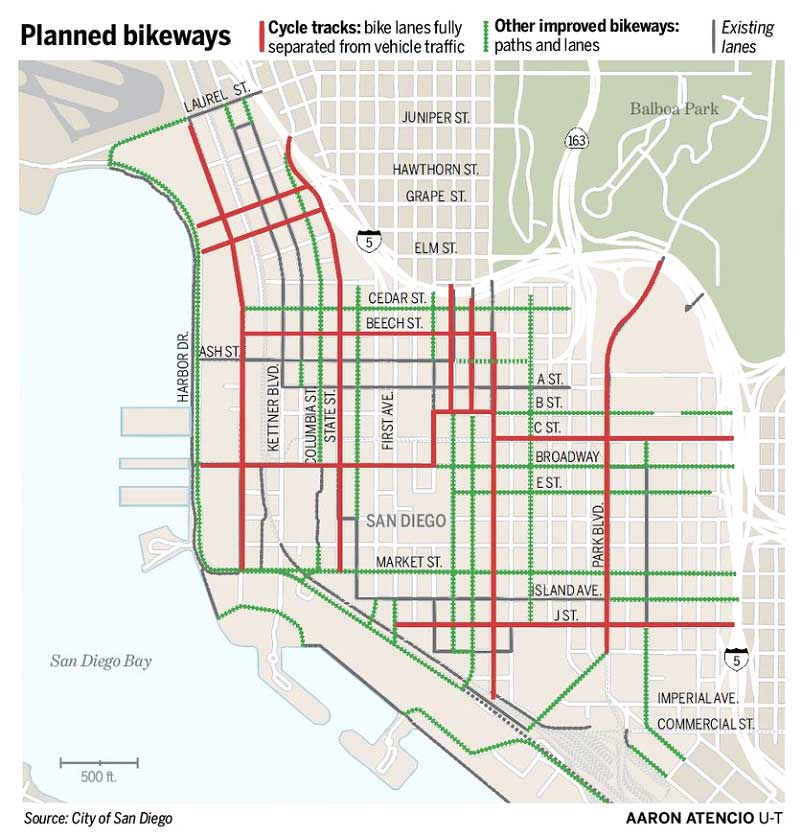The City of San Diego City Council adopted a plan in June, 2016 targeted toward increasing the routes available to cyclists and improving safety on the road.
Part of the city’s 2035 Climate Action Plan, the Downtown Mobility Plan is supported by local businesses and will cost $62.5 million over the next 30 years. Its goal is to transform many vehicle lanes and on-street parking spaces into protected cycling lanes and pedestrian walkways.
With a limited number of bicycle paths in the downtown area, cyclists ride streets with relatively high traffic volumes and moderate vehicle speeds. Under these conditions, cyclists don’t feel safe navigating the road or have to weave their way through pedestrians on the sidewalks if they want to avoid proximity to automobiles.
This plan aims to correct oversights by city planners that years ago designed downtown streets without including safe, designated paths for bicycles. The new bicycle tracks will be their own lanes physically marked and separated from the rest of the street. Cycle tracks are typically located directly adjacent to a roadway but have a vertical barrier to exclude motor traffic, further segregating and protecting cyclists.
The new north-south tracks are planned to be on Pacific Highway, State Street, Sixth Avenue, and Park Boulevard. The east-west tracks will be on Beech Street, Broadway, J Street, and small sections of B and C Streets. The locations of these new tracks were placed in order to connect routes through the city to bicycle paths in surrounding cities and communities.

Cyclists will still need to be wary of traffic and share lane space on roads such as Harbor Drive, Market Street, and Park Boulevard that divert traffic flow from Interstate 5, Route 163, and Route 94. These roads will not have the new tracks installed and will still pose a danger to cyclists.
If you or a loved one were injured or killed in a bicycle accident due to the fault of another party, call the Goetz Law Firm now at 858-481-8844 as you may file a claim against the negligent party and obtain compensation for injuries incurred and resultant property damages.
